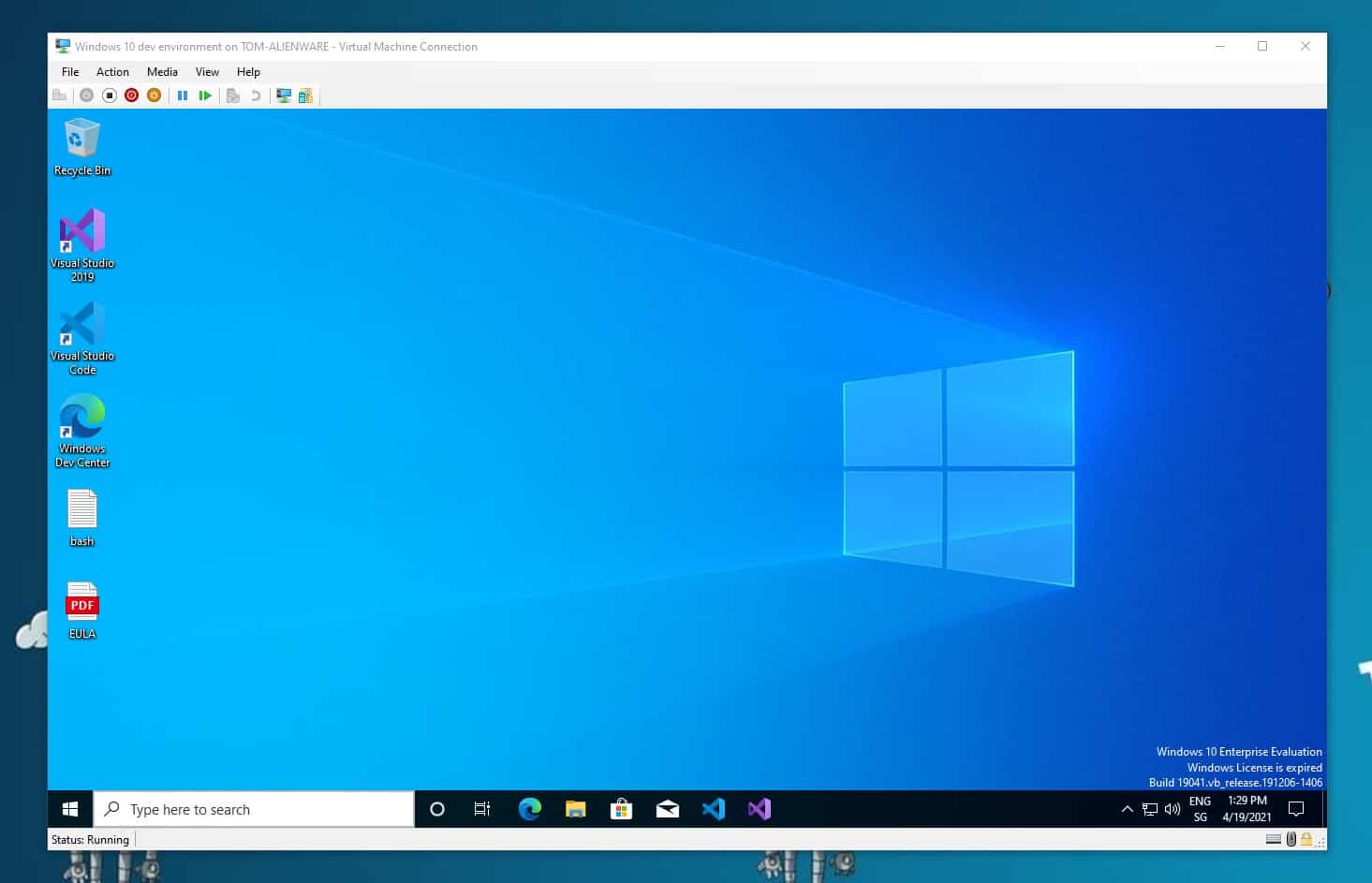

You will see EDK II UEFI SHELL.ġ1) Enter the following command containing path to bootloader. You can do it in the following way.ġ) Download latest release of EDK II UEFI SHELL (at write time of this post it is ShellBinPkg.zip) from GitHubĢ) Using disk manager create new small VHDX disk (capacity 100MB is sufficient).ĥ) In the newly create partition (in my case letter is E: as you can see at previous screenshot) create directory EFI and and EFI\boot.Ħ) From downloaded zip archive copy UefiShell/X64/Shell.efi file to EFI\boot folder and rename it to boot圆4.efiĩ) Temporarily disable Secure Boot of your VM.ĩ) Go to the firmware tab and move edkii.vhdx as first boot option.ġ0) Start VM. EDK II) and creates boot entry manually using it. You need to create small bootable media with UEFI Shell (aka. For debian for example it is in EFI/debian/shim圆4.efi, but you can just try find and try any efi file you find in /boot folder at your original computer with linux. In Linux this partition is mounted to /boot directory. It is something.efi (usualy boot圆4.efi) file located somewhere on the EFI System Partition (ESP) which is normal FAT32 partition and contains some files. You need only know where the bootloader is located. Hyper-V has no way how to do it from the host but you can do it from the guest itself. You must create boot entry (which is in Hyper-V visualised as File boot option) manually. When you create new VM its NVRAM is empty and UEFI does not know what file on the disk can be used as bootloader. To run Windows 11 and its applications on a Mac with Apple M1 Chip, you need to install Windows 11 on ARM that can run the majority of Intel-based Windows 11 applications by using a built-in emulator.When UEFI boots it searches Boot variables stored in NVRAM (it is emulated in Hyper-V) and search for any boot variable. To run virtual machines on a Mac with Apple M1 chip, Parallels engineers created a new virtualization engine that uses the Apple M1 chip hardware-assisted virtualization and allows to run ARM-based virtual machines. If your Apple computer uses the M1 chip, you are out of luck.Ībout Parallels Desktop for Mac with Apple M1 chip says: On the old computer and backup the entire disk to USBĬreate Windows PE or Linux Bootable MediaĬreate a new empty VM for Windows and set it to boot the aboveīoot the VM into the bootable media and restore the old Windows Using a third-party tool will give better results in this case.


 0 kommentar(er)
0 kommentar(er)
